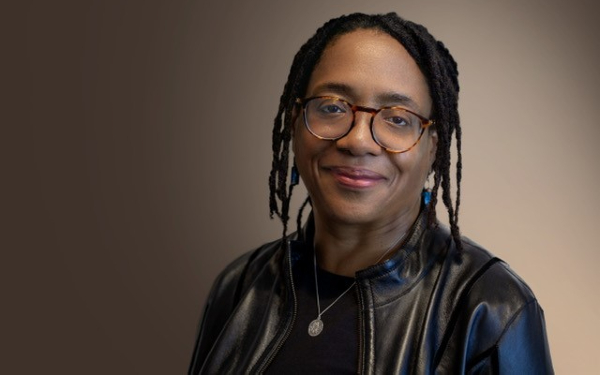
By Beverley Barnett-Jones
Addressing ethnic inequalities in children’s social care requires an understanding of the disparities that families face, as well as the factors that shape them.
The Nuffield Family Justice Observatory recently added to the evidence base by publishing a briefing paper on the ethnicity of children in care and supervision proceedings in England.
This was based on research carried out in collaboration with the Centre for Child and Family Justice Research at Lancaster University.
It used population-level data from Cafcass relating to 105,334 children from different ethnic groups who appeared in care proceedings for the first time between 2016-17 and 2021-22, and included an analysis of their demographic characteristics and legal outcomes.
Ethnic differences in age at start of proceedings
One of the key findings was that black and Asian children were, on average, older than white and mixed or multiple ethnicity children at the start of proceedings.
On average, white and mixed or multiple ethnicity children were five years old when they entered care proceedings, whereas black and Asian children were seven years old.
The proportion of children aged 10 or over was also highest for those who were black, Asian or from other ethnic groups. Furthermore, 27% of children from white and mixed or multiple ethnic groups came into court proceedings before they were a year old, compared with 19% of black children and 16% of Asian children.
This could indicate that local authorities are intervening in some families’ lives either too late or too early – but reliable evidence to establish this is not yet available.
Are children being supported at the right time?
There is a pressing need to examine whether children and their families are being supported at the right time.
Delayed intervention can mean that the measures eventually put in place are less likely to be effective – or might not make any positive difference at all – because the child and family might have already reached crisis point.
It would be pertinent to analyse the ethnicity of children who are already being safeguarded through child protection or child in need plans by the time they appear in care proceedings.
Order or no order
The research also paints a complex picture of how ‘interventionist’ final orders were.
At the end of proceedings, black and Asian children were more likely to not receive an order than children who were white or from mixed or multiple ethnic groups. In these cases, safeguarding action wasn’t deemed necessary at the end of proceedings – so could there potentially have been a level of overcautiousness or over-intervention from the local authority?
Or, conversely, had these families been helped to take measures or access support services to avert the need for an order? Research that investigates this issue would be welcomed, especially as care proceedings are likely to be stressful, traumatic and lengthy.
A case file analysis that assesses the reasons why the local authority believed a child was at risk of significant harm, and which order was originally applied for, would prove particularly beneficial.
Degrees of intervention
Furthermore, when black and Asian children did receive an order, they were, on average, ‘less interventionist’ than those received by their white counterparts.
For example, black and Asian children are most likely to be on supervision orders, which are at the lower end of the intervention ‘scale’. An exception to this finding was that black and Asian children had the highest proportion of secure accommodation or deprivation of liberty (DoL) orders, which are extremely interventionist. Again, it’s vital to ascertain why.
Black and Asian children were less likely to be on an adoption/placement order – the most intrusive form of state intervention in family life – than children from white and mixed or multiple ethnic groups. This happened to 6% of black and 5% of Asian children compared with 17% of white and 16% of mixed or multiple ethnicity children.
It is also important to note that mixed heritage children were significantly over-represented in adoption. As well as trying to unravel the reasons behind this, we should be considering how well their identity and cultural needs are being met.
Change in law on adoption and ethnicity
This is especially so as in 2014, the government removed the requirement for adoption agencies to give due consideration to the child’s religious persuasion, racial origin and cultural and linguistic background when making decisions about them.
We know there were many complex reasons for this legislative change, some driven by ideological positions, including the opinion that black children might have potentially been missing out because they were waiting to be placed with the right family based on racial and cultural characteristics.
But, nearly 10 years later, we can see that this change did not have the intended impact.
Fall in number of black children adopted
According to government figures, the number of black children adopted fell from 120 (2.2% of the adopted population) in 2014-15 to 60 (1.7%) in 2019-20. Over the same period, the number of black children who were no longer being looked after because they had been adopted went down from 4% in 2015 to 2% in 2020.
Furthermore, the Ending Racial Disparity In Adoption report (Adoption and Special Guardianship leadership Board, 2022) found that black children waited longer for adoption than white children.
It concluded that the strategies required to find families for black children in need of adoption were to recruit black adopters and match black children; rebuild trust with marginalised and minoritised families; and to properly resource interracial adoption.
Recruiting black adopters
Significant work is being undertaken by Adoption England – the umbrella body for regional adoption agencies – to address the complexity around recruitment and system barriers that prevent willing black families coming through to successful approval.
Much can also be learnt from the work of the Black Adoption Project led by Adopt London, which aims to create better futures for black adopted children in London and ensure that every black child who needs an adoptive family can have one
As I have indicated above, this research leaves many unanswered questions. We strongly encourage researchers to consider carrying out in-depth, quantitative or qualitative studies in relation to children’s and families’ journeys before and through family justice and afterwards, to analyse the disparities and complexities uncovered.
The quality and completeness of ethnicity data has been improving in recent years and we urge professionals working in and around the family court to ensure that children’s ethnicity is recorded where possible to enable this kind of research.
Taking an intersectional approach
I would also encourage social workers to consistently analyse care proceedings through an intersectional lens that looks at ethnicity along with other social categories such as class and gender.
This involves asking whether under- or over-intervention could be occurring in particular groups with differing ethnic identities and reflecting on what factors might be driving the measures being taken and the orders being applied for and granted.
Is there any evidence that individual or institutional biases could be influencing decision-making?
Or could adultification bias – when notions of innocence and vulnerability are displaced by notions of responsibility and culpability -be playing a part? Research suggests that black children are most likely to experience adultification bias, resulting in their rights being diminished or ignored and hindering child protection responses.
And, finally, I would call on social workers to implement anti-racist practice in their everyday work; to be informed about the disparities that children from different ethnic groups can face; and no matter how challenging or difficult it might be, to have open conversations about ethnicity and inequalities within the systems (including multi-agency) that they work within.
Beverley Barnett-Jones is associate director for practice and impact at the Nuffield Family Justice Observatory and a registered social worker





 Assistive technology and dementia: practice tips
Assistive technology and dementia: practice tips  A trauma-informed approach to social work: practice tips
A trauma-informed approach to social work: practice tips 




 Find out how to develop your emotional resilience with our free downloadable guide
Find out how to develop your emotional resilience with our free downloadable guide  Develop your social work career with Community Care’s Careers and Training Guide
Develop your social work career with Community Care’s Careers and Training Guide  ‘Dear Sajid Javid: please end the inappropriate detention of autistic people and those with learning disabilities’
‘Dear Sajid Javid: please end the inappropriate detention of autistic people and those with learning disabilities’ Ofsted calls for power to scrutinise children’s home groups
Ofsted calls for power to scrutinise children’s home groups Seven in eight commissioners paying below ‘minimum rate for home care’
Seven in eight commissioners paying below ‘minimum rate for home care’
 Facebook
Facebook X
X LinkedIn
LinkedIn Instagram
Instagram
A great and thought-provoking article by Beverley Barnett-Jones. The point about social workers (and wider multi-agency partners) needing to take an intersectional approach to care proceedings is essential. The two-year delay in care proceedings for Black and Asian children raises questions about the role adultification plays in not seeing children from minoritised backgrounds as vulnerable as their peers. Research from the US shows that Black children (girls) as young as five years old are treated with less care than their non-Black peers. Other factors influencing how professionals view and interact with children include their gender, age, and socio-economic background.
The more comfortable we get discussing biases in our systems, processes and professional judgements, the better the outcomes for all children.
Loads of distracting descriptions to reinvent the traditional term of institutionalised racism. Yes that includes social workers courts managers multi-agenciencies police Foster carers court guardians solicitors all allegedly working in the best interests of the non white child or young person.
The best interests of the black, Asian, and minority children are not given the priority they should be given within the organization as a whole. There is no doubt about this!!
Institutional racism is widespread across the whole system, however, no one challenges what is happening.
Social workers should be in a position to challenge what is taking place without repercussions. Children, race, culture, and gender no longer appear to be a priority as part of the child’s welfare checklist when in proceedings.
If the treatment of black and minority workers within the workforce is not addressed. Why would undervalued and minority groups want to put themselves forward to support a system that is likely to undervalue them also?
More black, Asian, and minority adopted parents and foster carers are needed, ask yourself why they do not come forward.
A social worker may ask for support for a black or minority family, however, in some cases, the family’s needs /support may be overridden to support a nonblack family whose needs are given more focus/priority (difficult to say but it does happen). Is this a case of ignoring what is in plain sight or do those with the majority voice receive a service?
The social worker is then accused of not providing a service when it is not the social worker who decides where resources are placed, despite requesting the service. As stated some sections of society remain invisible it is not hard to predict this then impacts recruitment.
I am not sure you need research to identify what is in plain sight, but rather who will address what has been taking place for years, therefore leaving certain sections of children vulnerable. Also not addressing a child’s individual needs leaves that child’s identity being disregarded and having to fit into a system that does not meet their individual needs because they are not a part of the majority.
I have read the above report. Social workers are in a position where they can observe poor practice, they are aware when a decision is not safe or not in the best interest of the child and or family. To highlight this leaves the social worker open to having their integrity questioned, marched out of the building, or even having their notice handed in for them. I speak from experience despite the requirements from Social Work England 6.1stipulating this is one of the requirements the above does take place!! Therefore ask yourself are black, Asian, and minority children receiving fair and safe practices? It appears to me these standards have been eroded. I speak from the experience of a practicing social worker of 43 years who wants to see in practice fairness as this will keep all children focused on and whose needs are paramount. Again this is not happening. Perhaps more needs to be done on why we become social workers in the first place. Asking questions is not a lack of respect but ensuring we have given every child the best outcome, again this is another requirement we have lost sight of.